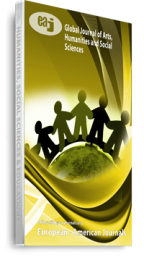Ethnography of Communication is a novel approach that relates language with the cultural norms, values and the speaking rules that are specific to a particular speech community. Duranti (1997)1 defines Ethnography as follows:” Ethnography is the written description of the social organization, social activities, symbolic and material resources, and interpretive practices characteristic of a particular group of people”. A number of scholars including Dell Hymes (1962)2 Sherzer (1983)3, Hill and Hill (1986)4 and Saville-Troike (2003)5 worked in the framework of ethnography of communication. Though the studies made by all ethnographers generally focus on the spoken language in a community, it is possible to extend the above frameworks to the analysis of short stories in view of the fact that many short stories are not merely narratives from a third person point of view but involve dialogues between characters. Often the speech patterns, expressions, motivations and the logical deductions they make are in conformity with the particular society they belong to. In particular, the SPEAKING Model evolved by Dell Hymes (1974)6 is found to be highly adaptable to the analysis of short stories.
Keywords: Characters, Conflict, Culture, Just Lather, Language, communication

